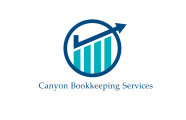News release
About 2.8 million Canadians will transition to EI regular benefits starting September 27
September 25, 2020 Gatineau, Quebec Employment and Social Development Canada
Since the beginning of the COVID-19 pandemic, the Government of Canada has put Canadians first, providing the support they need to continue to make ends meet while staying safe and healthy. As we transition from the Canada Emergency Response Benefit (CERB), the Government is continuing to support Canadians through a flexible and more accessible Employment Insurance (EI) program.
Today, Minister of Employment, Workforce Development and Disability Inclusion, Carla Qualtrough, and Minister of Families, Children and Social Development, Ahmed Hussen, highlighted that for eligible Canadians, the Government will transition from the CERB to a flexible and more accessible EI program, starting September 27, 2020, as originally announced on August 20, 2020.
As a result of these temporary measures, EI will now be available to more Canadians, including those who would not have qualified for EI in the past, supporting an additional 400,000 people through the program. Canadians receiving EI are eligible for a taxable benefit at a rate of at least $500 per week, or $300 per week for extended parental benefits. Canadians claiming EI benefits for job loss would be eligible for at least 26 weeks. Returning to the EI program will allow claimants to benefit from the Working While on Claim rules. These rules allow claimants to keep receiving part of their EI benefits and all their earnings from work. In addition, employers will once again be able to make use of registered Supplemental Unemployment Benefit (SUB) plans to provide support to employees.
The EI program will also allow Canadians with 120 hours of insurable work or more to qualify by providing a temporary, one-time credit of 300 insurable hours for those claiming EI regular and work-sharing benefits. Canadians claiming EI special benefits – including maternity, parental, sickness, compassionate care, and family caregiver – will be provided with a temporary, one-time credit of 480 insurable hours.
In light of the continuing pandemic, the waiting period will be waived for EI sickness benefit claimants to encourage compliance with public health measures. The requirement to provide a medical certificate will also be waived for all sickness claimants. Service Canada will retain the ability to request evidence of sickness for integrity purposes.
To ensure a smooth transition to EI, the majority of Canadians still receiving the CERB through Service Canada who are eligible for EI will be automatically transitioned. Service Canada will contact all EI clients to confirm whether they need to apply or are being transitioned automatically. Clients can also verify the status of their claim in their My Service Canada Account.
Canadians who will need to apply to Service Canada to access EI benefits include:
- 900-series Social Insurance Numbers holders;
- self-employed workers who received benefits through Service Canada; and,
- Canadians who received the CERB from the Canada Revenue Agency but could have 120 hours of insurable and meet the other eligibility criteria.
As is normally the case, Canadians become eligible for their first EI payment at the end of the two weeks that they are out of work. This means, for example, that those switching to EI from CERB effective September 27, 2020, will be eligible for their first EI payment as of October 11. Over 80% of eligible Canadians are expected to receive their payment by October 14 – 3 days after becoming eligible, and over 90% are expected to be paid within 3 to 14 days.
Service Canada has nearly doubled the number of specialized EI call centre agents in advance of the expected unprecedented number of EI claims over the coming weeks. Nevertheless, Canadians who need to speak to an agent should expect long wait times due to the anticipated record call volumes. Service Canada thanks Canadians needing to speak to an agent for their understanding and patience.
Canadians are encouraged to visit Canada.ca to find answers to their questions and to use the call centre’s automated telephone service.
For workers not eligible for EI, Bill C-2 was tabled in Parliament on September 24 to create three new temporary Recovery Benefits to support Canadians who are unable to work for reasons related to COVID-19.
By returning to the EI program, we are ensuring Canadians have access to the support they need, while at the same time supporting a strong economic recovery by reintroducing measures that continue to encourage and help people get back to work. The EI system will become the sole delivery mechanism for employment benefits, including for Canadians who did not qualify for EI before the pandemic. This pandemic has shown that Canada needs an EI system for the 21st century.





